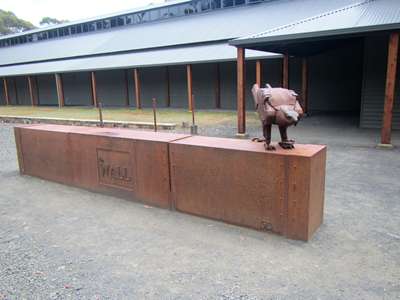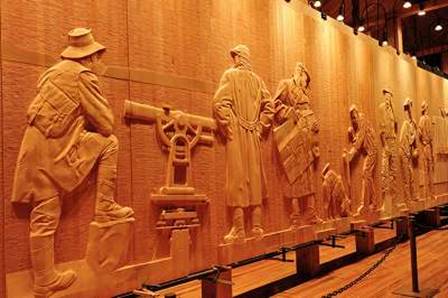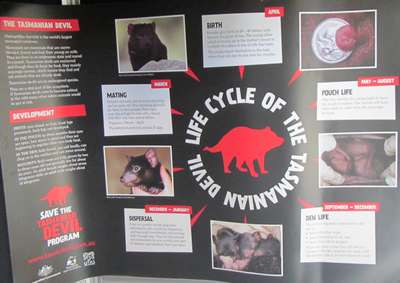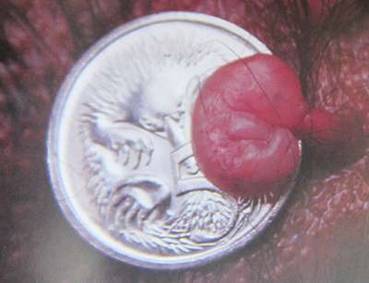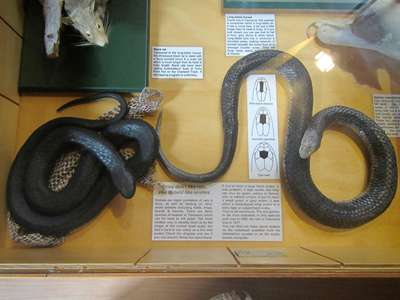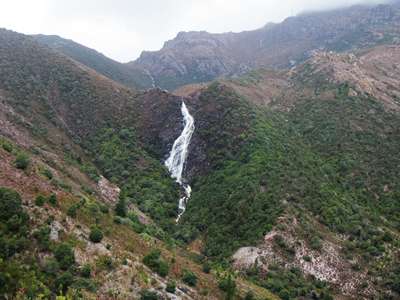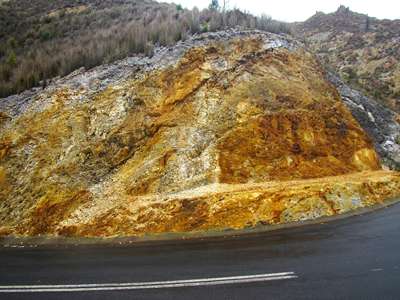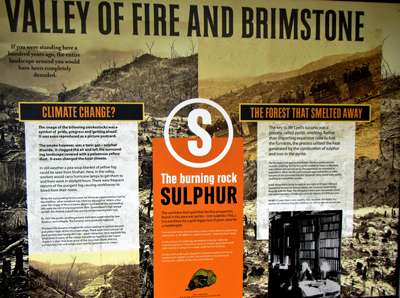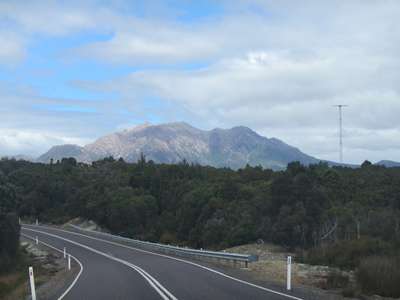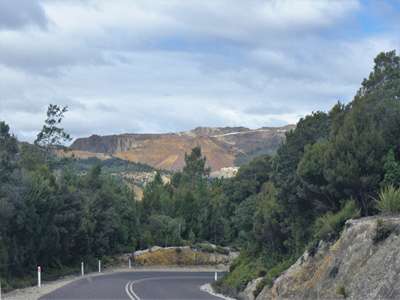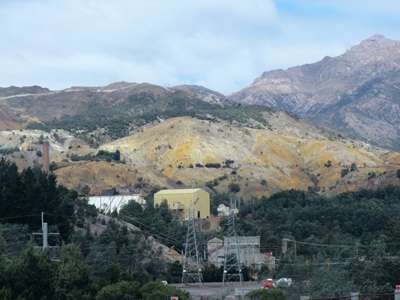Creation, destruction and beauty

|
Sunday 14th February 2016 Today we finished the drive to Strahan, stopping off at a
couple of places along the way. Just a few kilometres along the road from
Bronte Park we came across The Wall in the Wilderness. The wall in
question is made of 3-metre high panels of wood, into which scenes from the
history of Tasmania have been sculpted by artist Greg Duncan. His aim is
to create a 100-metre long wall which will tell the history of the harsh
Central Highlands region and commemorate those who helped shape its past and
present, beginning with the indigenous peoples, then to the pioneering timber
harvesters, pastoralists, miners and Hydro workers. We had no idea what to expect when we paid our $12 each
entrance fee, but the guy in the ticket office assured us it would be worth
every cent. He was absolutely right. From the sculptures in the
entrance lobby – a workman’s jacket carved from wood that looked so
much like cloth that I wanted to reach out and feel its softness – to the
massive work in progress that is the wall, it was fascinating. The detail
in the work was amazing. The sculptor had deliberately left a piece of each
panel unfinished – a horse’s back leg, a man’s arm – so
that one could see stages of his work and how he had transformed a piece of
wood into scenes that were almost alive. Truly impressive. I had to
remember to close my mouth as I stood and marvelled at the artist’s
skills and took in the stories they told.
We had no idea of the treasure hidden inside this
building. Photo
courtesy of Outback spirit tours. No cameras were allowed inside. From here we stopped next at Lake St Clair. This is at
the southern end of the Cradle Mountain-Lake St Clair National Park, the
opposite side of the mountain we visited last weekend. We plan to return
here on our way back to Hobart to do some walking by the lake, so for
today it was a quick stop at the visitor centre to get some walks info and to
take a look at the lake. We wandered around the displays in the visitor
centre before setting off once more for Strahan.
Interesting information about the threatened Tasmanian
Devil. A
newborn attached to a nipple in its mother’s pouch. Tiny.
The critter on the right looks just like Steve’s
unfriendly friend. Glad it was inside a glass case, and more importantly,
dead! We drove on through beautiful mountain scenery, until we
approached Queenstown, where suddenly the surroundings changed. Instead
of forested hillsides in shades of green there were suddenly huge areas of
orange and yellow bare rock. The change was dramatic and rather shocking.
A waterfall finds its way down the hillside. The
dramatic change to bare rock as we approached Queenstown. As we drove along pondering why on earth this landscape was
so different to everywhere else, we came across a laybay with a viewpoint over
the town of Queenstown below, and an enormous information board that explained
it all. Don’t you just love the Aussies’ penchant for
information boards? Who the heck needs Google in this country?!
The info board told us why the landscape changed in this
area. It seems that the rocks which make up Mounts Lyell and Owen
and the surrounding area, where we now stood, contained vast quantities of a
variety of metal ores. In the late 1800’s the nearby creeks were
being panned for gold, and during the search an outcrop of oxidised rock was
found, which indicated the presence of mineral ores below the surface. The
‘fool’s gold’ which was found by the first prospectors was
actually pyrites, or iron sulphide. It was useless to the prospectors, but
from ancient times the incendiary nature of sulphur had been well known –
the ‘brimstone’ of the Bible. With the discovery in the area of
not just gold, but silver and copper, tin and iron, fuel was needed for the
smelting plants that extracted the metal from the rock. A long way from
supplies of coal to fuel their furnaces, they turned instead to the pyrites
which was so abundant and readily available. This was to be the kiss of death for the surrounding
hillsides. The smelting plants used the recently developed process of pyritic
smelting, which utilised the heat generated by the combustion of sulphur and
iron in the pyrites. In the closing years of the 19th century,
Queenstown was referred to in the press as “Copperopolis” –
the Copper Town - as its smelters churned out thousands of tons of copper.
The image of the billowing smokestacks was a symbol of pride and progress, but
the smoke was a toxic gas – sulphur dioxide. It clogged the air and
left the surrounding landscape covered with a poisonous yellow dust. It
changed the local climate – workers would carry hurricane lamps during
the daytime to light their way to work through the yellow pea-souper fogs that
could be seen from Strahan, over 30 kilometres away. Some of the surrounding forests were cut down as
supplementary fuel for the smelters, but what remained was killed by the
sulphur. Within a few years the slopes of the mountains were devoid of
all vegetation, and with Queenstown’s high annual rainfall, the shallow
topsoil was quickly washed away, leaving bare rock. By 1921 the pyritic
smelting process had been superseded, but the preceding twenty years of
pollution had changed the surrounding landscape forever. Over the last
100 years, slow re-growth has taken over in the valleys, but with no topsoil on
the higher slopes, it is likely that the bare rock will remain for generations
to come. A fascinating piece of history that demonstrates how, in our
ignorance, we have changed our environment irrevocably. But even as I
felt sadness for the damage wrought to these hills, I couldn’t but
marvel at the colours, textures and shapes of the barren rock which seemed to
have a beauty of its own.
Approaching Queenstown, the first signs of change in the
landscape.
The effects of 20 years of pyritic smelting become
clearer as one descends into the valley and Queenstown itself. |
